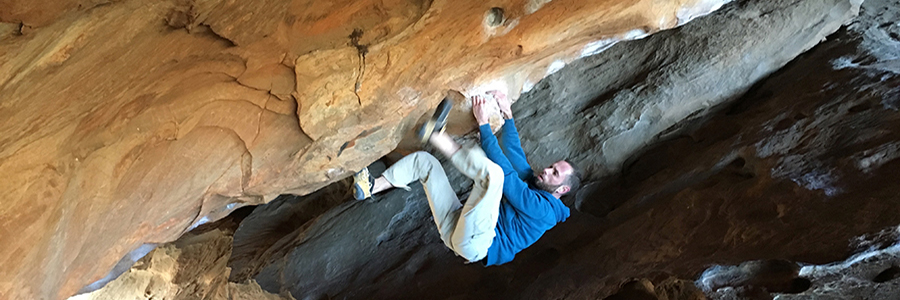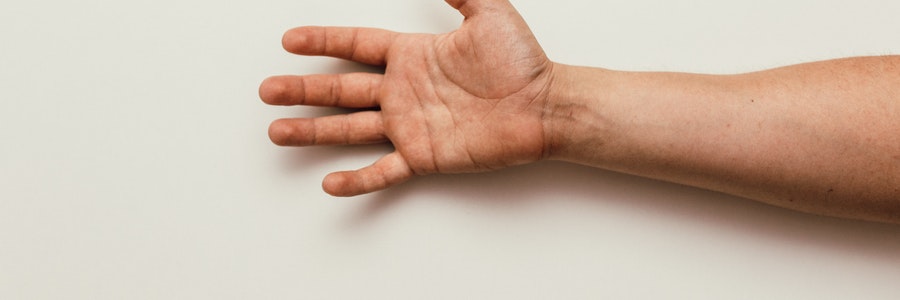Straightforward Ways To Increase Finger Strength
All posts by pat
Posted on 2022-07-25

Why train finger strength?
Finger strength is a key factor when climbing, especially as you get into the higher grades. In this post we will discuss different strategies you can employ to increase finger strength. To keep things very simple I will present two routines: beginner and advanced. Select as required to your skill level.
Beginner Routine
I would recommend unweighted two arm fingerboard hangs on a 18 millimetre edge for novices who are new to training, combined with limit bouldering. It goes without saying a thorough warmup prior to a hang board session is mandatory. Start with 10 second hangs and as you increase weight added over the course of weeks drop hang times to 5 seconds. If you are training pure strength as a pose to power endurance remember fatigue is the enemy in strength training so plenty of rest is fine, around two minutes between hangs when executing max hangs. Hangboard at least twice a week to see real benefits and two bouldering sessions - one session being limit boulder - a week as well as the hang board sessions is ideal as well.
Advanced Routine
For more advanced climbers I would recommend one arm hangs combined with limit bouldering, once again two sessions a week for hang boarding combined with two sessions of limit boulder. Perform these on an 18mm edge as well. For this routine I recommend 3 1 arm straight hangs each side, for 5 seconds. It’s important to keep the shoulder engaged throughout the hang and hang with the fingers in the half crimp position. Rest for 2 minutes between hangs. You will generally be performing these at maximum capacity. If you cannot do a pure 1 arm you can off load some weight by using a pulley system, such as passing a rope through a carabiner and attaching one end to yourself and weight to the other end. Record the amount you offload. You will over time, this reduce this to nothing and you will be able to hang 1 arm unaided. At the other end of the spectrum if you can comfortably hang one armed begin to add weight. Reducing the size of the edge is not recommended due to the risk of a catastrophic finger injury.
Get On Top Of Finger and Elbow Injuries
All posts by pat
Posted on 2022-12-22

In this post I will discuss injuries that are common in bouldering, how we can avoid them in the first place and how I have treated injuries successfully in the past. Hopefully this is something that can help you and save you time. Just to clarify, I am not a health professional and any finger injury should be examined by a professional. I have had all of the injuries that will be mentioned and have successfully managed to treat and overcome them, so hopefully sharing my story will help.
To keep things simple there are two main types of injuries I will discuss. Number one is finger pulley injuries. Number two is elbow tendonitis.
Finger pulley injuries
Finger injuries to the pulley system are normally in the form of tears, that can range from minor tears to complete ruptures. These two types of injuries are the two most likely injuries that most climbers will experience in their lifetime so having an idea of how to deal with them is helpful. Firstly, preventing a pulley tear is obviously ideal and warming up thoroughly is mandatory before you climb something with smaller holds that requires crimping. Another key to avoiding an injury of this kind is avoiding climbing to exhaustion or continuing to climb when you are very tired. Especially on crimps, small holds or dynamic moves on small holds. Our focus slips, our technique gets sloppy and we stop adding value to the climbing session. Not only are we increasing the risk of a finger injury, we can be reinforcing sloppy technique as well. It is a good idea to end the training session while you still have energy to spare and your focus is still sharp.
If you have suffered a pulley injury do not do any form of training that aggravates the injury. Ideally, I believe you should rest completely until any swelling has subsided and you can move the injured finger through its full range of motion. This could be anywhere from a week to 3 or more weeks depending on the tear. Once the swelling has subsided I gently begin using the finger again, as long as I am not getting any pain. I find taping the finger across the joint/knuckle is helpful as it prevents crimping. I recommend climbing only on open handed holds and avoiding steep climbing for at least the first month. This will get blood to the finger and promote healing.
In the case of a complete rupture when I ruptured my pulley in my middle finger I had to stop climbing for a total of 8 weeks, and for 3 of those weeks my finger was buddy taped in a splint. I consulted a hand surgeon and as a result I had 4 weeks off work and with the complete rest it was able to heal without surgery and I have not had a problem with the finger since. I slowly eased back into climbing on bigger holds initially and cautiously climbed harder problems over a period of 2 -3 months.
Elbow tendonitis
Elbow injuries are certainly very common in climbing. Pain on the inner elbow and pain on the outer elbow, I have suffered from both. One reason this can happen is the tissue/ muscles in the forearm get very tight. Self massaging of the forearm with with the fingers of the other hand whilst rotating the wrist can help loosen up the muscles and tendons. Stretching the forearms can help relieve tight tendons as well. However the number one thing that worked for me though was a piece of equipment called the Thera-Band Flexbar. If you google Thera-Band FlexBar Video Demonstration there is a demonstration of how this piece of equipment works and the different levels of resistance. For myself, I began on the green level of resistance twice a day and when that felt too easy I moved up to the blue level of resistance. Now I perform the exercises once a day for prevention in less than 5 minutes. Since using this piece of equipment I have not had any further elbow issues and I would recommend it.
UPDATE COMING
It has been quite a while since I have updated this post. Time flies by! An update is coming soon!
Blog Keyword Search
Login
Useful Tips On Bouldering
Useful tips, tried and tested for everything from simple training tips to get strong, mental tricks, to information about gear, safety and more!